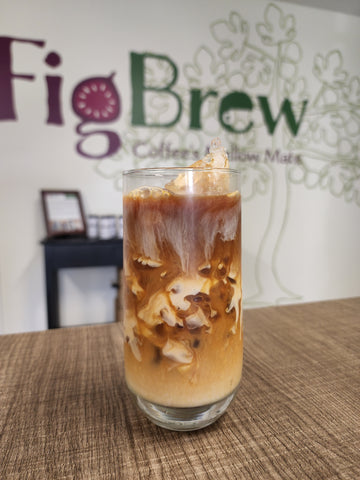Although I tell myself that I have to have caffeine to start my day, I've given up coffee enough to know this to be untrue. The addiction is more to the coffee culture than the caffeine itself. Sitting on the porch first thing in the morning with a hot earthy-tasting beverage while I plan my day is something I will continue to do – no matter what's in the mug. But what does it mean to be like coffee? What senses are involved in convincing your body this beverage you are drinking is as close to the real thing as possible? It turns out it's every sense – taste, smell, touch, hearing, and sight. Taste tends to be what most coffee drinkers focus on since coffee has a very distinct taste that is hard to imitate. Smell is a close second since you smell whatever is in your cup before you taste it. Touch is basically to confirm that the mug is as hot as when filled with coffee. Hearing pertains mainly to the sound of the grinder, brewer, or kettle going off and is a much under-appreciated aspect of the coffee experience. Using the same equipment for your coffee alternative as for your coffee coaxes you towards a greater acceptance of the alternative. Sight is another surprisingly intense sensory. As someone who drinks milk in their coffee, a coffee alternative must look just like coffee when adding milk. If it does, then I start salivating in anticipation.
The single most significant factor in determining whether my mind will be satisfied with a particular coffee alternative is the quantity of dissolved solids in the beverage. Total dissolved solids (TDS) are increasingly used to define good coffees. It's one of the reasons that coffee drinkers are rarely tea drinkers and vice versa. Coffee consists of solids dissolved in water, with espresso having more dissolved solids than brewed coffee. Tea is an infused process with significantly fewer dissolved solids. As a test, I took several coffee alternatives and brewed them at different strengths based on their recommended serving size. TDS was measured using a refractometer. The results were plotted in the graph below along with that of a leading decaf coffee for comparison.

Two coffee alternatives stand out at the y-axis intercept (suggested serving size concentration). Pero has a higher TDS value since it's an instant, and everything in a serving size gets dissolved in water. Options like Figgee, Teecino, Coffig, and decaf coffee are brewed and rely on a small component of the total solids to be dissolved. Coffig stands out on the low side but may reflect a deliberately low TDS value to achieve a higher number of servings per container. Generally, instants and herbals aren't the go-to for hard-core coffee drinkers, but I'll leave it up to the reader as to whether an instant beverage with a higher TDS is preferable. It's pretty clear that each manufacturer knows the TDS characteristics of their products and targets the serving size to achieve the same relative value as coffee. So the next time you're drinking your coffee (alternative), you can impress your friends with your knowledge of TDS.





